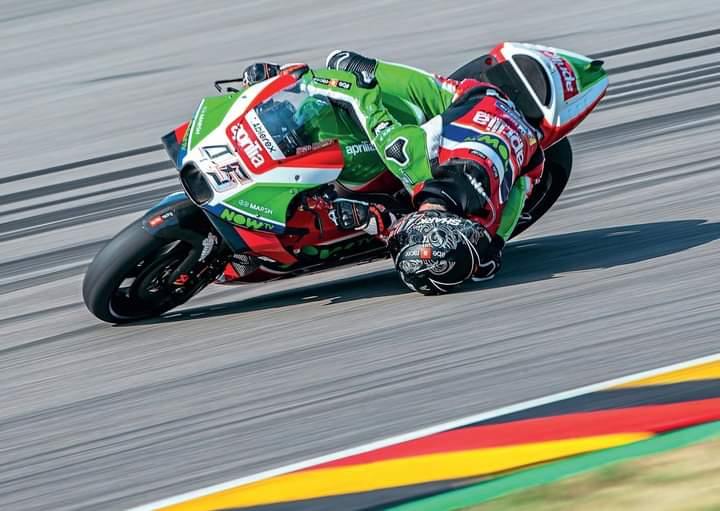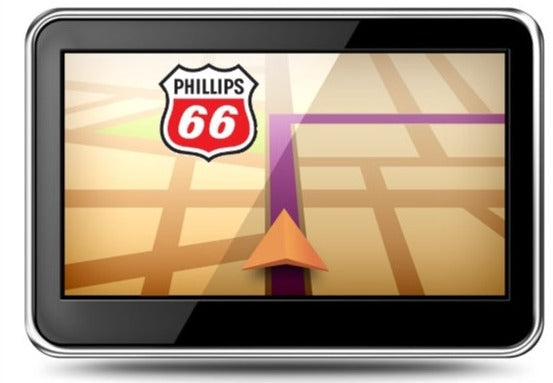Recent Post
The Importance of Travel Insurance: Why You
Dec 27, 2023

Andy Wegener
Jul 20, 2023
Improve Your Riding: Essential Tips and Techniques
Motorcycle riding combines elements of skill, balance, and an intimate understanding of one's machine, making it not only a mode of transportation but also a passion for many. Enhancing these abilities demands practice, patience, and a devotion to continuous learning. This article aims to guide riders to improve their skills in essential aspects of motorcycling, namely slow riding, braking, passing, throttle control, peripheral vision training, target fixation avoidance, body positioning, and managing riding speed.
Slow Riding
The art of slow riding is an often overlooked yet integral aspect of motorcycle mastery. It involves controlling the bike at reduced speeds, which can be challenging due to the lack of gyroscopic forces that typically aid stability. Slow riding improves balance, clutch and throttle control, enhancing a rider's competence in handling traffic situations, such as stop-and-go scenarios or maneuvering in crowded areas.
To practice, find a safe, spacious area away from traffic, like an empty parking lot. Set up cones or markers and navigate through them at a slow pace. Alternatively, participate in a slow race, where the goal is to be the last to cross the finish line without touching your feet to the ground or losing balance.
Passing
Passing other vehicles, especially on two-lane roads, is a complex operation that requires precision, timing, and situational awareness. Before attempting a pass, ensure the other driver is aware of your presence. Use turn signals, maintain a safe distance, and never linger in a driver's blind spot. Always have an escape route and enough room to safely complete the pass.
Throttle Control
Smooth throttle control is essential for maintaining motorcycle stability, particularly when cornering. Abrupt throttle inputs can destabilize the bike, leading to potential accidents. Practice opening the throttle gently and gradually, especially when coming out of corners. This smooth power transition will keep the motorcycle balanced and easy to control. Practice (in a safe environment, preferably during a track day) to run the lap or concourse at slow speed, no braking, using 1st, 2nd and 3rd gear only. You’ll quickly notice after a few turns that your speed is too high and you will need to brake. Well, next lap you’ll know where to take it a little easier on the throttle in order to master that turn. This exercise is meant to give you a better feel for transitioning and will ultimately make your ride smoother.
Peripheral Vision Training
While focusing on the path ahead is crucial, honing peripheral vision skills can broaden situational awareness and enable early hazard detection. Regularly practice scanning the road while keeping your head stationary, using your peripheral vision to monitor the surrounding environment.
Target Fixation
Target fixation - the phenomenon where a rider subconsciously steers towards an object they are focusing on - can be detrimental. Riders must learn to redirect their gaze from potential hazards to their desired travel path. Regular training can help rewire this instinctual response, making it a key skill for safe riding.
Body Position
The rider's body position plays a significant role in motorcycle control. Lean your body into turns to assist the bike and maintain a loose, relaxed posture to absorb road imperfections. Secure your lower body to the bike by gripping the tank with your knees, which reduces weight on your hands and prevents fatigue. Experiment with different body positions to find the most comfortable and effective posture for various riding conditions.
Now, there’s a technique and style which splits our rider community in half. Surely not meant for every day riding and usually only practiced during track days (well, since it looks so damn cool you see guys and gals doing it when out carving canyons), this body position during cornering is called "Hanging off".
Hanging off a motorcycle is a technique where the rider shifts their body weight towards the inside of a turn, often with the inner thigh clinging to the tank, the torso leaning inwards, and sometimes even with the inner knee pointing outwards. Hey, ask any track day junkie and they’ll tell you their goal is to “get their knee down”. The main purpose of this technique is to navigate corners at higher speeds while keeping the motorcycle more upright.
This approach provides several advantages:
1. Increased Stability and Grip
By hanging off, the rider can maintain a greater contact patch - the area of the tire touching the ground - because the motorcycle remains more upright. This increases tire grip, providing more stability during cornering, particularly at high speeds.
2. Enhanced Safety Margin
By keeping the motorcycle more upright, you retain a larger safety margin before reaching the bike's lean limit, or the maximum angle at which it can lean without losing balance or scraping hard parts.
3. Improved Vision
Hanging off allows the rider to see further around the corner, enabling early detection of potential hazards, road conditions, and exit points.
4. Reduction of Centrifugal Force
The act of hanging off counteracts the centrifugal force that tries to push the motorcycle to the outside of the corner.
5. Better Weight Distribution
Hanging off helps distribute the motorcycle's weight more effectively, enhancing the overall handling during cornering.
It's important to note, however, that the hanging off technique is not needed for everyday street riding and is typically utilized in racing or spirited track-day riding. Overdoing it on public roads might unsettle the bike or lead to unsafe riding conditions. As with any advanced riding technique, it's best to learn and practice hanging off under the guidance of professional instructors, ideally in a controlled environment like a race track.
Riding Speed
Maintaining appropriate speed is pivotal for safe riding. Too slow, and you become a road hazard; too fast, and you compromise your reaction time. Learn to adjust your speed to match visibility, traffic density, road conditions, and weather. For example, reduce speed in wet conditions or heavy traffic.
Braking
Purposely I have placed this section as final point of the article because it is so much more than just pulling a lever and twisting a throttle.
A motorcycle's brakes are its most important safety feature. Understanding how to effectively use both the front and rear brakes, and the correct proportion between them, is critical. Many modern motorcycles have sophisticated braking systems, but the rider's ability to use them properly ultimately determines their effectiveness.
To enhance braking skills, practice emergency stops in a controlled environment. Start with a moderate speed and then apply the brakes to stop as quickly and safely as possible. Note the difference between dry, wet, and gravel surfaces. Also, familiarize yourself with engine braking - reducing speed through downshifting - which can decrease reliance on the brake system and enhance control.
Besides braking to simply stop your motorcycle, there is also the aspect of braking before cornering - and a whole new world opens up here!
By survey 100% of over 10,000 riders agree on this point: they know that if they possessed the ability and skill to get their turn entry speeds consistently right, their confidence would soar; they would feel more in control; they would be faster and they would be smoother. Here is some information on why you might want to master that ability.
Here’s what my mentor and coach Keith Code from the California Superbike School says (and before you complain that this only applies for track riders and racers - NO, you can apply this to your day-2-day riding):
Coasting Races
In the mid '70's I was introduced to an amazing form of "racing". Four or five of us would get together at the top of one of our favorite southern California canyon descents; turn off the engines; line up across the road; heckle each other; count to three; pick up our feet without pushing off any more than was necessary to get moving and laugh and yell out insults to one another all the way down to the bottom. Most of the runs were a couple of miles long with lots of turns. That's a coasting race.
The rider who coasted the farthest and fastest (they were usually the same rider) "won". There weren't any tricks, equipment mattered little, it was all you. Well, I did have one little trick -- pushing the pads back into my front caliper to eliminate the pad drag.
The camaraderie was elevated enormously by the fact that, unlike our usual canyon rides we could, for the most part, communicate throughout the descent. It was such a delight. Even when it went wrong and someone crashed (like me) I still have fond memories and get a warm sensation when recalling it.
Strategy of Coasting Races
On the technical side of things: I was immediately impressed with several aspects of this form of entertainment and a couple of those points were indelibly printed in my memory and became a part of the California Superbike School over 20 years ago.
The simple trick to winning a coasting race is the obvious, the rider who could maintain his momentum by using his brakes the least generally would prevail. Doing an entire run down some of the steeper roads with little or no braking took as much or more mental grip than doing it with them, this becoming immediately apparent in the first semi-tight corner you came to. Unwilling to give up the momentum yet afraid of the speed which had accumulated, your focus and interest became laser sharp.
Sure your hand would be poised over the lever and sure it took some supreme acts of willpower to keep from using brakes and sure you would make errors and have to use the brakes but you also paid closer attention to the speeds than you normally would. The reduction of distractions like engine noise and gear changes and throttle and charging the corners with hard braking were all eliminated and it allowed you to make much finer estimates of your corner entry speeds and maintain that precious momentum.
Low Noise, High Speeds
After my first coasting race I realized I never would have gone through those turns with the power on as fast as I had done with no engine running, no charging and, for the most part, no brakes. It made me realize just how distracting those things really were and just how much of my attention they absorbed.
One of the things I have noticed when I watch students is how erratic their turn entry speeds often are. That comes from the idea they have to charge the corners and brake hard but they can tend to over-brake and foul up their entry and corner speed momentum.
Low Speeds, Quick Times
One day, as I was driving up to the Laguna Seca track in northern California to do a school, I realized that if anyone was going to overcome this self generated confusion from over-braking, the quickest route to that was riding no brakes.
Once I got to the track I tried it out and rediscovered what I'd already figured out before from the coasting races. I went faster into the turns, my speed sense and judgement became sharper, I worried less about my entry speed and found that getting back to the throttle earlier was significantly easier. I thought it would be worthwhile to have the students try it out.
While it is true that some tracks lend themselves to this form of sharpening your riding skills better than others, I did begin to notice a trend at different tracks. The riders who stuck with the no brakes, even after we officially switched back to using them, made more improvement in their speed and confidence than those who were "testing" our brake pad material by charging the turns.
Ignore the Instincts
It's almost as if riders feel obligated to charge turns. It's the idea that you will go faster because of it and seems such a simple and direct route to that end but rarely works. The instinct to brake late and hard is like clubbing a female to then take her for a wife. That plan isn't going to work.
I have observed many truly diligent riders who ignored the instinct and stayed with the No Brakes format knocking off seconds from their lap times. To top it off they were achieving their quicker times with only one or two gears instead of the usual thrashing through the gear box. They might be going 20 mph slower on the straights but one should pay attention to the results (improved lap times and corner speed) not the impulse to go fast on the straights.
As I have said a thousand times, the brakes become more of a crutch than a tool for most riders. Someone always whines about the no-brakes riding format at school. Well, crutches are notoriously hard to put down, aren't they? Riders claim it is difficult (of course it is), that they could go faster with them (faster down the straight away, yes); that they "had" to use them (the crutch again) and on and on.
What these riders don't realize is how satisfying it is to persevere at the exercise until you really get it, so you really can judge your entry speeds and really know you can do it. Very, very satisfying. Very, very big contribution to your riding confidence. Very!
The Basic Idea
The logic is flawless. Using or not using the brakes is irrelevant to the intended result of getting into the corner at the exact right speed. One either knows what that right speed is and can achieve it or they are guessing. If they are guessing they are paying more attention to it than they should have to. Guessing brings about inaccurate braking and inaccurate braking brings about rough and uncertain turn entries.
Trail Braking
Definition: Action of trailing off or tapering off brake lever pressure and braking force as the rider enters the corner.
Trail braking is a valid and useful tool for any rider at any level of riding. The warning is this: when used too often, or as a crutch to calm the fear brought on by the inability to sense speeds accurately, it not only doesn't solve the source of the problem it makes it worse.
As the pilot you must make the decision on when to let off of the brake(s). It is a complicated little piece of work with all of the other usual distractions you encounter at the turn's entry, e.g., setting the lean, getting the line and feeling the traction. Bottom line - if you are trailing the brakes towards a well known, accurately understood speed it is a tool. Otherwise it tends to become a crutch and invites riders to "charge" the turns, low line them, leave the throttle till late and make tricky and sometimes dangerous mid-corner steering corrections all of which could be avoided with accurate turn entry speed sensing and setting.
Panic Crutch
In contrast to the aforementioned, I see many riders who feel compelled to stab at their brakes in the last moments before entering a corner. While watching them do it, the only conclusion one would come to is that the speed was a big surprise; all of a sudden they become aware of it and it seemed too fast. This is an obvious error. They aren?t using the brake to adjust anything except their fear. In either of the above cases, an accurate sense of speed opens the door to confidence.
Results Then and Now
The essence and final result of any brake release for cornering remains this:
To set the speed of the bike correctly for that place on the track (or road) so that no further changes are necessary. In other words, you get it right. Not too fast, not too slow.
Braking itself is an art within the art of cornering. Your sense-of-speed is the underlying resource you have to get it right. As an exercise, no brakes riding will help improve your sense-of-speed. Do no-brakes whenever you have the opportunity and see what happens to your sense of speed and see what happens to your riding. The best part is that once you have combined a good sense of speed with the other twelve basic skills of cornering it all begins to come together.
It is truly one of the skills that allows you to discover the ART OF CORNERING.
Conclusion
Believe me guys when I say: this last paragraph has helped me improve my riding immensely. It sure sounds a lot like “track talk” but having completed all levels of the Superbike School and then some, I can tell you that it taught me how to be a better rider. Operating a motorcycle touring business, I’ve been riding professionally for over 25 years (and not on track/race bikes but mostly Harleys…) and I got so much use out of these practicing lessons that I can call it “invaluable”.
Improving motorcycle riding skills is a continuous journey that demands dedication, practice, and a keen understanding of both rider and machine. By focusing on slow riding, effective braking, cornering, safe passing, smooth throttle control, peripheral vision training, target fixation avoidance, suitable body positioning, and speed management, riders can significantly enhance their control, confidence, and safety on the road. Remember, proficient riders are not born; they are made through unending learning and practice.
“So keep the rubber on the road and the shiny side up!”
← Older Post Newer Post →







